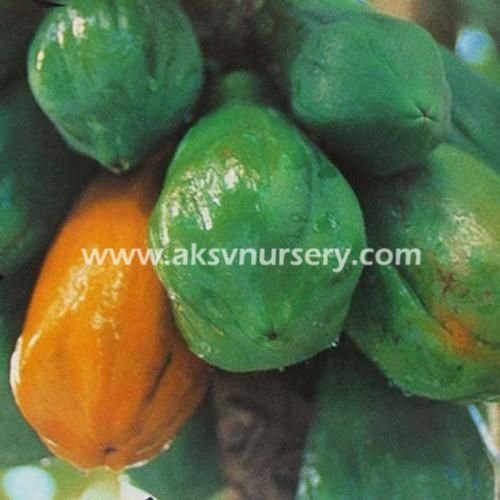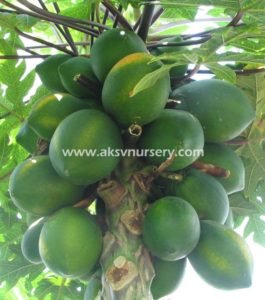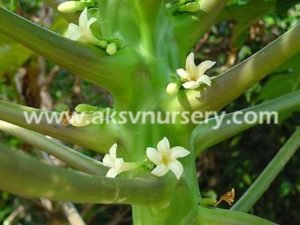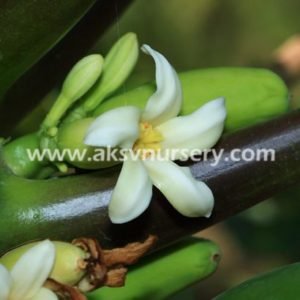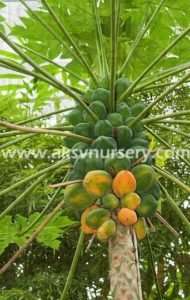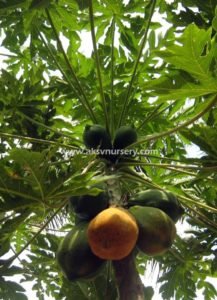Carica papaya
Family: Caricaceae
Papaya
Origin: Tropical America
Season: Best quality comes during warm months July to October. Some fruit all year. Fast growing herbaceous plant with thick, hollow trunk. Leaves lobed to 2′ across. Flowers/fruit appear in nodes directly from trunk. Size varies from 1/2 to 20 pounds. Flesh is yellow to orange-red, melon-like. Plant freezes at about 31 F, young plants are very tender. Plant in full sun, however will grow tall in shade, but produces less fruit. Best to use lots of organic matter and mulch to reduce nematode problems. Best to replant every 2-3 years. Soil must be well-drained. The delicious fruit of the papaya is good for you as a dessert or as a digestive aid (it contains the enzyme papain, which is essential to digestion). Papaya flowers can be male, female, or hermaphrodite. In starting a plant, first wash the seeds well and remove the slippery outer coating; then sow immediately. Cover with soil and keep in a warm, bright place. Germination should occur in four to eight weeks. You can also start seeds in vermiculite; keep a plastic bag over the pot to maintain high humidity. Papayas are prone to damping-off. Water copiously in the summer but less frequently in the winter. Repot the plants frequently, the first time six months after you start, and then again six months later. The papaya’s leaves are scalloped and seven-lobed and remind of the popular houseplant called the umbrella tree. Solo Papayas are self pollinating.
Carica papaya
